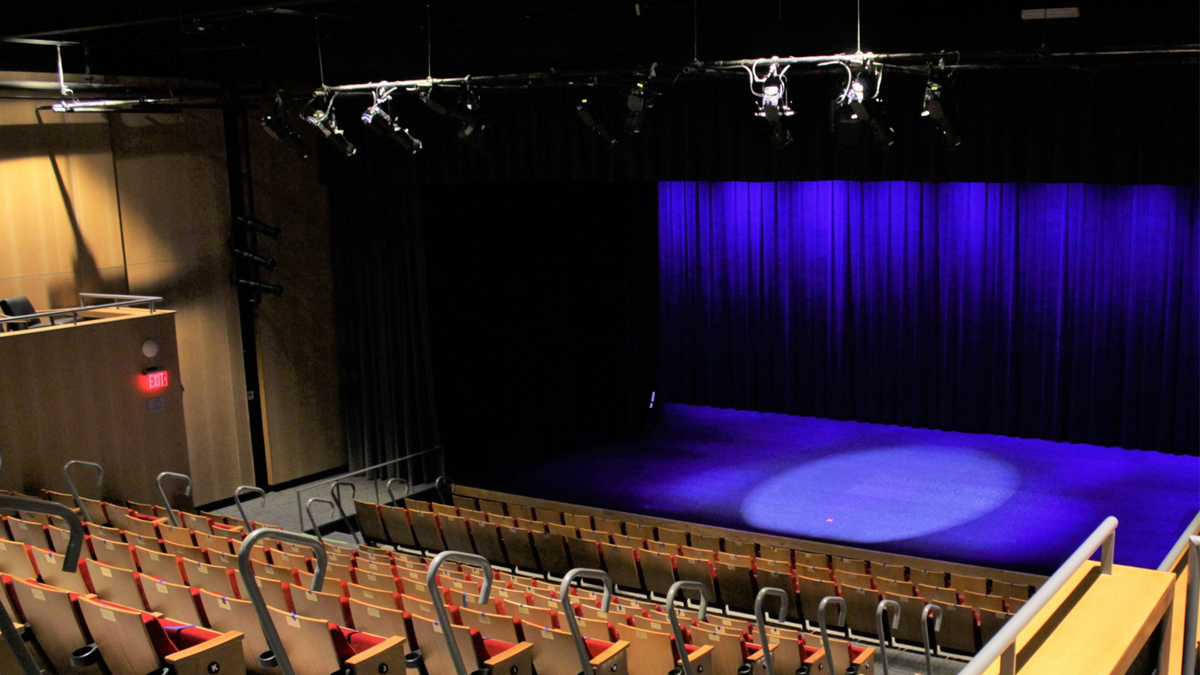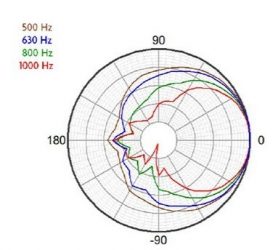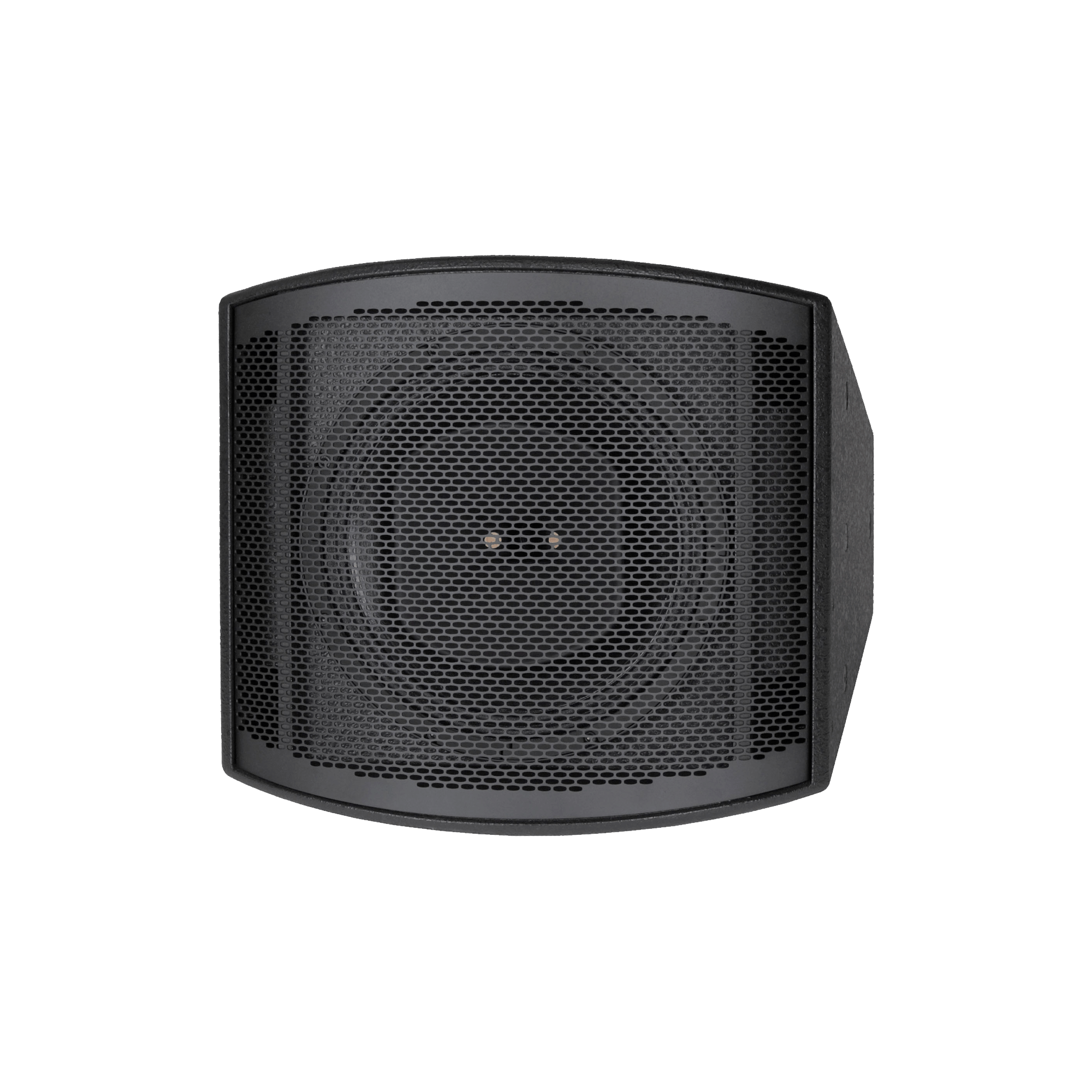
The term cardioid refers to the shape of the capture polar diagram, in the case of microphones, or the emission polar diagram, in the case of loudspeakers, which makes us understand how these transducers are differently sensitive to variations in the angle - respectively of incidence and emission - of the sound. In the specific case of loudspeakers, the different lines represented on this diagram, vaguely 'heart-shaped' (hence the word 'cardioid'), indicate the sound intensity as the angle and frequency vary.
Taking a step back, we will say that an ideal point source of sound emits pressure waves in spherical form, so its polar diagram in 3D will be like that of a sphere while in the horizontal plane it obviously reduces to a circle:


This type of polar diagram is called omnidirectional. On the contrary, that of a kind cardioid, in the ideal case, looks like this:

As can be seen, the emission is maximum at 0°, i.e. at the front, and attenuates as the angle changes as you move, until it reaches zero at 180°, i.e. at the rear. For angles other than 180°, however, the rear emission is much attenuated compared to the front.
In real cases, the polar diagram also depends on frequency, so at low frequencies it will tend to take the form of a widened cardioid (subcardioid) and at high frequencies a narrow cardioid (hypercardioid).
In other words, low frequencies tend to propagate in a manner that increasingly resembles omnidirectional propagation, with almost the same intensity in all directions, while at mid/high frequencies the system becomes more directional.

Most acoustic loudspeakers behave in this way; therefore, there is a high contribution of low frequencies behind the loudspeaker.
This accumulation of low frequencies can interfere destructively with speech intelligibility and sound clarity, causing sound energy to 'leak out' in unwanted directions, even outside the room where the system is located.
Think of the typical case of a live concert: the loudspeakers, facing the audience, must for obvious reasons emit sound energy in that direction, i.e. towards the audience, and not behind towards the stage and the performers.

The currently most widely used solution for reducing the emission of unwanted low-frequency rear sound waves is based on active cardioid arrays. These are more complex systems that simulate, thanks to the use of a second signal line with DSP/amplifier and additional cancellation speaker, a cardioid polar pattern (see figure below), with the disadvantage, however, that these additional components are required. The end result is a rather bulky and expensive solution, impossible to support for many installations due to the high price or lack of space within the room.

Fulcrum Acoustic, the American company distributed exclusively in Italy by Ligra DS, has developed a technology passive cardioid to offer a more compact, convenient and easy-to-use alternative to the active cardioid systems just described. Passive cardioid loudspeakers produce high sound pressure in the front direction and substantial sound attenuation, especially at low frequencies, in the rear direction without requiring additional amplifiers, loudspeakers and signal processors.

CCX12 Fulcrum Acoustic
The Fulcrum Acoustic CCX12 coaxial loudspeaker, unlike the CX12 which is identical in appearance, uses ports on the top and bottom of the cabinet to create the subcardioid polar pattern
Passive cardioid technology: the benefits
Costo ed efficiency
As already mentioned, thehe most obvious advantage of passive cardioid loudspeakers over their active equivalents is that they require fewer transducers and use fewer channels of amplification/ DSP, configurandosi as well as a more efficient and cost-effective solution. As already mentioned, the most obvious advantage of passive cardioid loudspeakers over their active counterparts is that they require fewer transducers and use fewer amplifier/ DSP channels, making them a more efficient and cost-effective solution.
Dimensions
Passive cardioid technology achieves very accurate directivity control in less than half the space required by active cardioid arrays. A single passive cardioid loudspeaker can therefore perform the same function as the latter.
Minor distortion
In an active cardioid system, where there are two separate low frequency transducers receiving two different signals from the DSP/amplifier, each distortion product created by these transducers will not be exactly the same. In a passive cardioid system, on the other hand, the rear and front radiation are identical, since they are produced by the membrane movement of the same woofer, which means that the products of distortion also cancel each other out, resulting in a cleaner sound.
Adjustable polar diagram
The only degree of freedom offered by an active cardioid array is the possibility of varying the signal reaching the second transducer, the one responsible for cancelling the rear low-frequency emission.
In a passive cardioid loudspeaker, the direction in which the tuning ports are facing can be varied, which allows for differences in the shape of the polar response. For example, in some cases we might want to increase the attenuation at 90o compared to what would happen in a classic cardioid configuration. Having more attenuation at 90o and not a zero at 180o at certain frequencies, for example below 1000 Hz as in the diagram here, makes it a more useful device than the classic cardioid.
Passive cardioid technology: applications
Arrangement against the wall
In many situations such as theatres, places of worship and other environments, acoustic loudspeakers are mounted on the wall with special brackets, or in any case are located close to a rear wall. When the loudspeaker is positioned in this way, a reflected sound wave from that surface will interfere with the frontal radiation and create zeroing and peaks in the sound output, resulting in a muddy sound in the mid-bass range. By using a passive cardioid system in such a situation, the effect of the wall is drastically reduced and the need to equalise the build-up of frequencies around 250 Hz is eliminated. Since the phase response is left intact, the result is great clarity and intelligibility in both speech and music, and tuning becomes easier, as you no longer need to worry about reflections from the wall itself.
Delay lines
Another application in which passive cardioid loudspeakers are particularly useful is in delay lines. Without going too much into the specifics, we will say that delay lines are used to temporally align the emissions from various loudspeakers, necessary for that particular sound, converging in a certain reference area in order to avoid echo phenomena. Think for example of a large room, such as a theatre or church, where it is necessary to place an additional pair of loudspeakers in the middle of the room compared to those on the stage in order to optimally cover the entire area in which the spectators are arranged.
Limitation of neighbourhood nuisance
In a PA system it is necessary to limit the area to be soundproofed to that occupied by the audience present: propagation of sound in other directions is to be absolutely avoided. Examples might include sports facilities and stadiums near residential areas or hotels with a ballroom located below the guest rooms. By projecting the sound forward, passive cardioid loudspeakers help to provide a high-quality listening experience for the guests inside the venue, while minimising rearward emission and thus disturbance for those not involved in the event.

